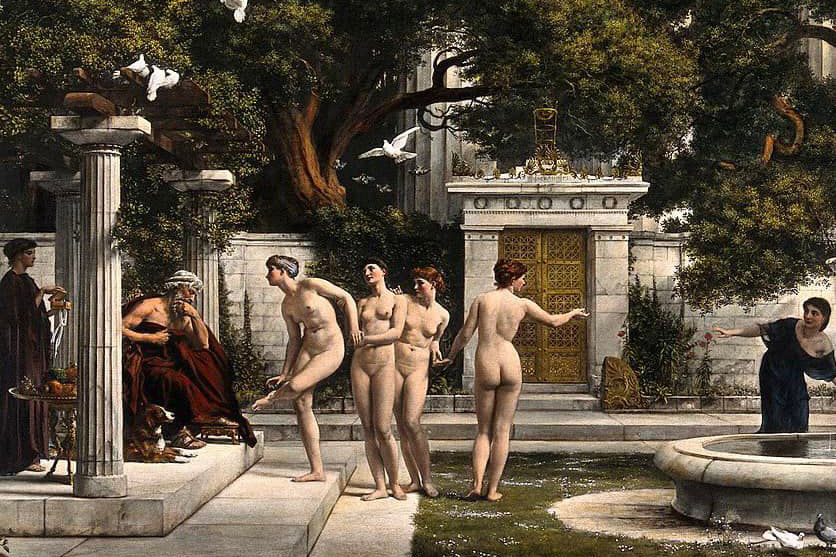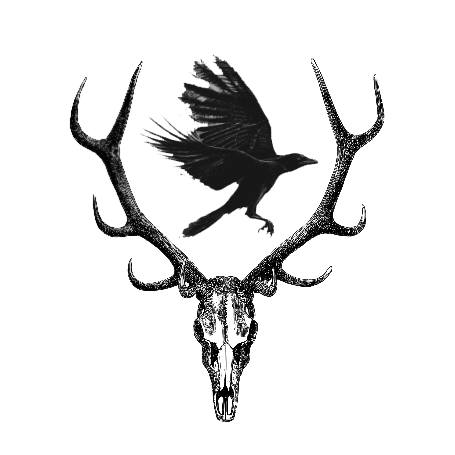All art by Edward Poynter, 1836 - 1919

All effective magick stands on three legs: imagination, emotion, and feeling; everything else – all the words and gestures, the implements and costumes, the elaborate circles and furniture – serve only to reinforce and focus these three capacities. If any of these three is lacking, then the work is likely to fail; once you are skilled in using all three, you can dispense with practically all the other things people sometimes insist are essential to the practice. Of the three, emotion is the power that drives the whole show; emotion from the guts, and from the heart.
I will go even further; it is not just emotion, but passion that is the power behind magick. Passion in the sense of an intense desire to be connected to that which you are seeking to invoke; a desire that places no restrictions or limits on the connection, but which is so one-pointed that nothing save that which is sought is included within its focus. And passion in the sense of a boundless enthusiasm for the acts by which you seek to create that connection. Admittedly, this is the ideal case; but the closer you can get to it, even for a few moments, the more likely your work is to be successful.
I will go even further; it is not just emotion, but passion that is the power behind magick. Passion in the sense of an intense desire to be connected to that which you are seeking to invoke; a desire that places no restrictions or limits on the connection, but which is so one-pointed that nothing save that which is sought is included within its focus. And passion in the sense of a boundless enthusiasm for the acts by which you seek to create that connection. Admittedly, this is the ideal case; but the closer you can get to it, even for a few moments, the more likely your work is to be successful.

This passion-for-connection is what creates the magickal link between the magician and that which he is invoking; or, if the link already exists, expands it and strengthens it. The emotion literally creates a channel or umbilicus between them, through which energy and knowledge can flow in either direction. The stronger the emotion, the stronger the link becomes; the less energy is lost in side-thoughts and distractions, the stronger the link becomes. Thus a one-pointed focus is most desireable.
But conversely, restrictions the magician places on the connection become constrictions in the link, reducing the potential flow of power through it. If a magician insists that a spiritual force or being manifest itself in a specific way, then it is less likely to appear, or the manifestation with be weaker. But if his desire for connection is unconditional, then a response is much more likely, and will be more powerful when it comes. Similarly, if a magician doing a ritual to obtain money desires that money to appear in the form of a cashier’s check, he is less likely to obtain it than if he was willing to accept it in any form.
But conversely, restrictions the magician places on the connection become constrictions in the link, reducing the potential flow of power through it. If a magician insists that a spiritual force or being manifest itself in a specific way, then it is less likely to appear, or the manifestation with be weaker. But if his desire for connection is unconditional, then a response is much more likely, and will be more powerful when it comes. Similarly, if a magician doing a ritual to obtain money desires that money to appear in the form of a cashier’s check, he is less likely to obtain it than if he was willing to accept it in any form.

In its highest form, this unconditional passion becomes almost indistinguishable from what is called “Divine Love”, which is the closest that one can come (within the worlds of manifestation) to the transcendental state of the Mother aspect of divinity. Passion-for-connection transforms into a state of pure relationship, pure Love, in which all distinctions are erased; both the nature of the magician and the nature of that being invoked disappear, totally lost in the link between them. Imagination provides the medium (rather, an opening to the medium) through which magick produces its results. The personal imagination seems to blend seamlessly into the astral light, the larger magickal universe; the point at which one becomes the other is impossible to define clearly.
An object that begins as a purely internal construct – created and sustained by the imagination of a magician, propelled by the power of emotion – can move out into the astral light and take on a life independent of its creator. It can gather or become a container for magickal power, and act back on its creator (or on others) in ways that are impossible for him to produce through his imagination alone. Conversely, beings and powers operating on levels the magician cannot yet perceive can make themselves known to the him through his receptive imagination, opening his awareness into new realms of experience.
An object that begins as a purely internal construct – created and sustained by the imagination of a magician, propelled by the power of emotion – can move out into the astral light and take on a life independent of its creator. It can gather or become a container for magickal power, and act back on its creator (or on others) in ways that are impossible for him to produce through his imagination alone. Conversely, beings and powers operating on levels the magician cannot yet perceive can make themselves known to the him through his receptive imagination, opening his awareness into new realms of experience.

The symbols used in magick are forms that, when created in the imagi- nation, tend to gather specific types of power from the astral light, which are further limited by the intent of the magician. The shape of the container, in effect, determines what can be put into it; the simpler, rigidly geometric forms (such as the pentagram and hexagram) draw relatively pure, fundamental forces; complex symbols – e.g., god-forms – draw correspondingly complex assemblages of forces. When the magician projects the image of a symbol onto his surroundings, an extended magickal space is created in which the astral light becomes conditioned into conformity with the symbol.
The area becomes more attractive to the types of power invoked, more comfortable for magickal beings having the nature represented by the symbol. The world of the powers and the world of the magician then intersect, making interaction possible. Feeling is the third leg of the tripod, and the final key to success in magick. In order to bring into being the conditions you desire, you must create in yourself the sensations and feelings that the things you have created through your imagination are real, and that the goal of the operation has already been accomplished.
The area becomes more attractive to the types of power invoked, more comfortable for magickal beings having the nature represented by the symbol. The world of the powers and the world of the magician then intersect, making interaction possible. Feeling is the third leg of the tripod, and the final key to success in magick. In order to bring into being the conditions you desire, you must create in yourself the sensations and feelings that the things you have created through your imagination are real, and that the goal of the operation has already been accomplished.
In the magickal universe, when you act with all your being as if something is already real, it becomes real. This feeling of reality is the trigger that causes a symbol to move from the imagination into the astral light. This key to magick is simply stated, but in practice it seems to give the greatest difficulty for most people. The usual culprits are intellectual doubts – “I know I am only imagining this” – and fears of various sorts, e.g., “what if it makes me go crazy?” Both of these have to be ruthlessly eliminated from the magician’s consciousness for the duration of the operation. After the work is completely over, you can be as doubtful and fear-ridden as you want; a certain amount of doubt, of critical examination, is healthy and appropriate at that time. But during the work, you must be completely focused on feeling (not thinking) that what you create is real.

Some might be concerned that this “believing makes it real” idea is actually a form of self-hypnosis, a way of fooling oneself by reducing the critical faculties. A genuine success in performing the ritual will dispose of this concern. At some point in the work a threshold is crossed; the strength of the invocation produces an even stronger response from somewhere out- side yourself. Events in your magickal space take on a life of their own, at least partially independent of your will. And – most significant – they begin to manifest an intensity, richness and texture that it is utterly impossible for you to produce through your imagination alone, no matter how adept you might be in its use.
Once this has been experienced even a skeptical mind must grant that the events are “real” in some sense, even if not in the same way as mundane happenings. So for magick to be successful, emotion must push a link outwards into the magickal universe, imagination must aim it towards the desired goal, and feeling must affirm the reality of that which is sought. Full success will not come on the first try; for some people, not even on the fiftieth. It takes time to condition the mind to the proper performance of these practices. But once a single success is attained, additional successes follow at more frequent intervals.
Once this has been experienced even a skeptical mind must grant that the events are “real” in some sense, even if not in the same way as mundane happenings. So for magick to be successful, emotion must push a link outwards into the magickal universe, imagination must aim it towards the desired goal, and feeling must affirm the reality of that which is sought. Full success will not come on the first try; for some people, not even on the fiftieth. It takes time to condition the mind to the proper performance of these practices. But once a single success is attained, additional successes follow at more frequent intervals.
Written by Benjamin Rowe

